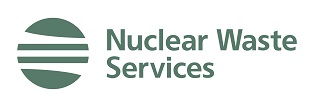2022 to 2023 year in review: Planning and Preparation
Published 26 October 2023
In conversation with Claire Gallery-Strong
Claire Gallery-Strong is the NWS Director of Strategy and Integrated Waste Management Programme.

Claire Gallery-Strong, IWMP Programme and Strategy Director, Nuclear Waste Services
In her role, she helps set the strategic direction of the organisation and informs the implementation of our work. She is the Executive lead for sustainability at NWS, making certain it runs through everything NWS does. She also leads an integrated approach to waste services through the Integrated Waste Management Programme.
As part of her approach, and in describing planning and preparation at NWS, Claire sets out the importance of connecting and bringing people together to deliver.
Planning and preparation is all about knowing and understanding what we have and what the waste is. Everything else then flows from this, and we can understand and implement the best treatment, most appropriate containment, and the right disposal route.
This is what is known as ‘waste characterisation’ and includes all the steps taken to collect information on the physical, chemical, and radiological properties of a material.
It may determine the way in which facilities are decommissioned and how the materials are sorted to segregate different waste types or categories. It helps us understand whether something is a waste and inform how it is best managed.
Waste characterisation includes a wide range of activities, from desk-based reviews of records to the application of highly specialised and cutting-edge technologies to obtain new data on the properties of the waste.
It requires the right equipment, technologies and infrastructure, and outstanding people with the right skills, knowledge, and experience.
There is significant benefit in conducting more detailed characterisation to allow waste to be more accurately characterised. Our aim is to protect our people and the environment, and assigning the appropriate classification means our resources are used in the most effective way.
For example, this year we’ve also worked with Magnox Ltd to safely and efficiently manage 500l stainless steel drums at the treatable radioactive waste store at Winfrith. Previously designated as ILW, our detailed technical analysis has confirmed the drums fall within the LLW classification which can be disposed of now – making this nuclear waste permanently safe, sooner.
In our first full year operating as Nuclear Waste Services, we’ve shone a light on the importance of integrated planning and preparation and have made important progress in key areas.
We’re leading enhanced waste planning across the NDA group and collaborating with the other waste producers to develop a group wide set of waste assumptions to support the development of integrated waste management opportunities and leverage economies of scale where possible, along with improving long-term decision-making across the waste management lifecycle.
We are working with waste producers more closely than ever before – and this year we’ve positioned our waste management experts on secondment within waste producers to provide embedded support and guidance and help to get waste flowing through the system.
We will lead the implementation of cutting-edge technologies and operate as a centre for expertise – while developing a new generation of experts for the future.
This is an incredibly exciting and influential time for NWS - and a decisive point in setting the thinking for the organisation.
Waste hierarchy – explainer

Our goal is to ensure that waste is managed in a way that is sustainable and protects people and the environment, now and in the future, whilst optimising the lifetime of the current Repository and future sites.
Waste is only disposed of as the last resort if it cannot be diverted for alternative treatment. We strongly promote the use of the waste hierarchy in all of our operational activities.
Most radioactive waste arising in the UK in volumetric terms is Low Level (LLW) or Very Low Level (VLLW). Nuclear Waste Services delivers solutions for this waste, including at the existing National Low Level Waste Repository, which has been operating since 1959 in West Cumbria as a valuable (but finite) resource for low level waste disposal.
The volumes of this waste going to disposal in the UK have been driven down greatly over the years through more effective application of the waste hierarchy to identify ways to avoid creating waste, to better characterise materials, identify new opportunities to re-use or recycle materials and physically reduce the volume of the remaining waste.
Between 2009 and 2021 this saw a remarkable shift from 95% of waste arising in 2009 going straight to disposal at the Repository, to only 2% of waste arising in 2021 going to disposal. The rest has been successfully diverted (for example, re-used or recycled).
We have led the way in developing and offering services to the industry to take advantage of alternative waste management routes, applying the waste hierarchy – helping to ensure the right waste form is in the right package and is disposed of at the right facility.

